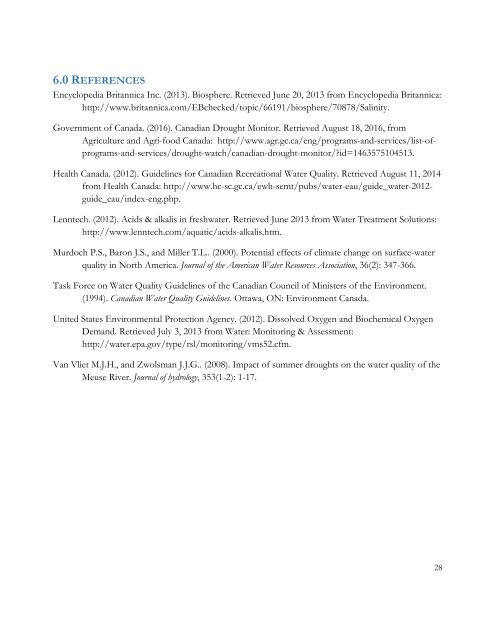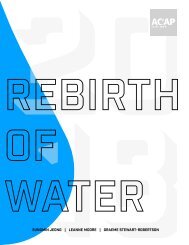Rebirth of Water Report 2016-2017
Marsh Creek, which is the largest watershed in greater Saint John, has been the recipient of centuries of untreated municipal wastewater deposition. Offensive odours, unsightly sanitary products and the threat posed by various human pathogens, resulting largely from the ~50 sewage outfalls in the lower reaches of Marsh Creek and the Saint John Harbour, have caused most residents to abandon the wellness of the watercourse. ACAP Saint John, a community-based ENGO and champion of the Harbour Cleanup project, has been conducting water quality monitoring and fish community surveys in the watershed since 1993 with the view towards someday restoring the ecological integrity of this forgotten natural asset.
Marsh Creek, which is the largest watershed in greater Saint John, has been the recipient of centuries of untreated municipal wastewater deposition. Offensive odours, unsightly sanitary products and the threat posed by various human pathogens, resulting largely from the ~50 sewage outfalls in the lower reaches of Marsh Creek and the Saint John Harbour, have caused most residents to abandon the wellness of the watercourse. ACAP Saint John, a community-based ENGO and champion of the Harbour Cleanup project, has been conducting water quality monitoring and fish community surveys in the watershed since 1993 with the view towards someday restoring the ecological integrity of this forgotten natural asset.
You also want an ePaper? Increase the reach of your titles
YUMPU automatically turns print PDFs into web optimized ePapers that Google loves.
6.0 REFERENCES<br />
Encyclopedia Britannica Inc. (2013). Biosphere. Retrieved June 20, 2013 from Encyclopedia Britannica:<br />
http://www.britannica.com/EBchecked/topic/66191/biosphere/70878/Salinity.<br />
Government <strong>of</strong> Canada. (<strong>2016</strong>). Canadian Drought Monitor. Retrieved August 18, <strong>2016</strong>, from<br />
Agriculture and Agri-food Canada: http://www.agr.gc.ca/eng/programs-and-services/list-<strong>of</strong>programs-and-services/drought-watch/canadian-drought-monitor/?id=1463575104513.<br />
Health Canada. (2012). Guidelines for Canadian Recreational <strong>Water</strong> Quality. Retrieved August 11, 2014<br />
from Health Canada: http://www.hc-sc.gc.ca/ewh-semt/pubs/water-eau/guide_water-2012-<br />
guide_eau/index-eng.php.<br />
Lenntech. (2012). Acids & alkalis in freshwater. Retrieved June 2013 from <strong>Water</strong> Treatment Solutions:<br />
http://www.lenntech.com/aquatic/acids-alkalis.htm.<br />
Murdoch P.S., Baron J.S., and Miller T.L.. (2000). Potential effects <strong>of</strong> climate change on surface-water<br />
quality in North America. Journal <strong>of</strong> the American <strong>Water</strong> Resources Association, 36(2): 347-366.<br />
Task Force on <strong>Water</strong> Quality Guidelines <strong>of</strong> the Canadian Council <strong>of</strong> Ministers <strong>of</strong> the Environment.<br />
(1994). Canadian <strong>Water</strong> Quality Guidelines. Ottawa, ON: Environment Canada.<br />
United States Environmental Protection Agency. (2012). Dissolved Oxygen and Biochemical Oxygen<br />
Demand. Retrieved July 3, 2013 from <strong>Water</strong>: Monitoring & Assessment:<br />
http://water.epa.gov/type/rsl/monitoring/vms52.cfm.<br />
Van Vliet M.J.H., and Zwolsman J.J.G.. (2008). Impact <strong>of</strong> summer droughts on the water quality <strong>of</strong> the<br />
Meuse River. Journal <strong>of</strong> hydrology, 353(1-2): 1-17.<br />
28


















